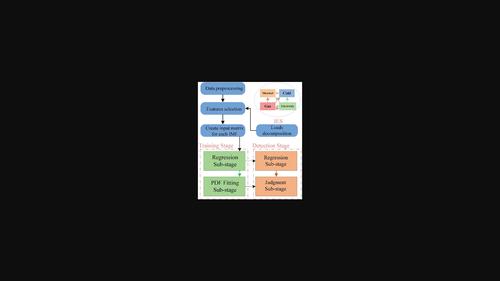当前位置:
X-MOL 学术
›
Adv. Theory Simul.
›
论文详情
Our official English website, www.x-mol.net, welcomes your feedback! (Note: you will need to create a separate account there.)
Data‐Driven Detection of Integrated Energy Theft Based on VMD‐MIC and Informer
Advanced Theory and Simulations ( IF 3.3 ) Pub Date : 2024-03-15 , DOI: 10.1002/adts.202301028 Yang Liu 1, 2 , Lei Wang 2, 3 , Hongwei Liu 1, 2 , Pengchao Zhang 2 , Qiaoyong Jiang 3
Advanced Theory and Simulations ( IF 3.3 ) Pub Date : 2024-03-15 , DOI: 10.1002/adts.202301028 Yang Liu 1, 2 , Lei Wang 2, 3 , Hongwei Liu 1, 2 , Pengchao Zhang 2 , Qiaoyong Jiang 3
Affiliation

|
Integrated energy systems (IES) may experience energy theft through disinformation injection attacks. With electricity as the primary target, the attacks are essentially two way. They gain additional benefits by manipulating meter readings on both the consumer and supply side. Regression based deep learning models with feature engineering can be used to detect these attacks. To detect energy theft more efficiently, this paper proposes an integrated energy systems theft detection (IESTD) based on variational modal decomposition‐maximal information coefficient (VMD‐MIC) and Informer. And using kernel density estimation (KDE), the error between the predicted and true values is fitted as a probability density function (PDF).The thresholds for the confidence intervals of the PDF and the thresholds for the number of outliers are set as the detection metrics. Simulations are performed on the three generated datasets. The results show that the model has good detection accuracy and strong robustness.
中文翻译:

基于VMD-MIC和Informer的数据驱动综合能源盗窃检测
综合能源系统 (IES) 可能会因虚假信息注入攻击而遭受能源盗窃。以电力为主要目标,攻击本质上有两种方式。他们通过操纵消费者和供应方的仪表读数来获得额外的好处。基于回归的深度学习模型和特征工程可用于检测这些攻击。为了更有效地检测能源盗窃,本文提出了一种基于变分模态分解最大信息系数(VMD-MIC)和Informer的综合能源系统盗窃检测(IESTD)。并使用核密度估计(KDE),将预测值与真实值之间的误差拟合为概率密度函数(PDF)。将PDF的置信区间阈值和异常值数量阈值设置为检测值指标。对三个生成的数据集进行模拟。结果表明,该模型具有良好的检测精度和较强的鲁棒性。
更新日期:2024-03-15
中文翻译:

基于VMD-MIC和Informer的数据驱动综合能源盗窃检测
综合能源系统 (IES) 可能会因虚假信息注入攻击而遭受能源盗窃。以电力为主要目标,攻击本质上有两种方式。他们通过操纵消费者和供应方的仪表读数来获得额外的好处。基于回归的深度学习模型和特征工程可用于检测这些攻击。为了更有效地检测能源盗窃,本文提出了一种基于变分模态分解最大信息系数(VMD-MIC)和Informer的综合能源系统盗窃检测(IESTD)。并使用核密度估计(KDE),将预测值与真实值之间的误差拟合为概率密度函数(PDF)。将PDF的置信区间阈值和异常值数量阈值设置为检测值指标。对三个生成的数据集进行模拟。结果表明,该模型具有良好的检测精度和较强的鲁棒性。



























 京公网安备 11010802027423号
京公网安备 11010802027423号